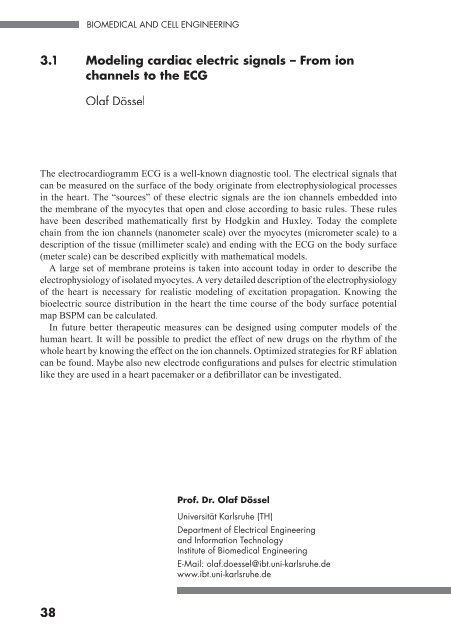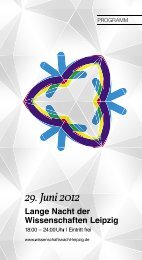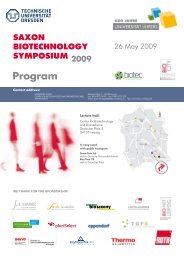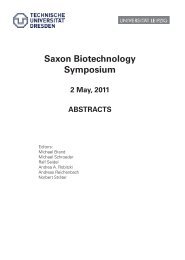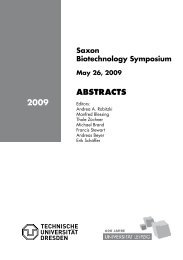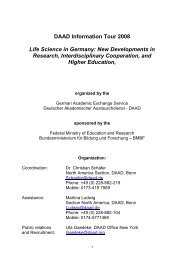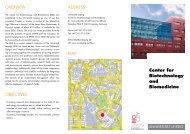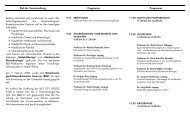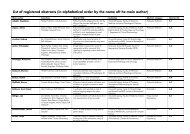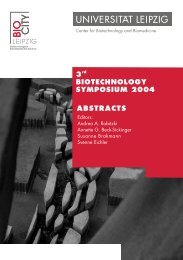biotechnology symposium 2005 abstracts - Universität Leipzig
biotechnology symposium 2005 abstracts - Universität Leipzig
biotechnology symposium 2005 abstracts - Universität Leipzig
You also want an ePaper? Increase the reach of your titles
YUMPU automatically turns print PDFs into web optimized ePapers that Google loves.
38<br />
BIOMEDICAL AND CELL ENGINEERING<br />
3.1 Modeling cardiac electric signals – From ion<br />
channels to the ECG<br />
Olaf Dössel<br />
The electrocardiogramm ECG is a well-known diagnostic tool. The electrical signals that<br />
can be measured on the surface of the body originate from electrophysiological processes<br />
in the heart. The “sources” of these electric signals are the ion channels embedded into<br />
the membrane of the myocytes that open and close according to basic rules. These rules<br />
have been described mathematically fi rst by Hodgkin and Huxley. Today the complete<br />
chain from the ion channels (nanometer scale) over the myocytes (micrometer scale) to a<br />
description of the tissue (millimeter scale) and ending with the ECG on the body surface<br />
(meter scale) can be described explicitly with mathematical models.<br />
A large set of membrane proteins is taken into account today in order to describe the<br />
electrophysiology of isolated myocytes. A very detailed description of the electrophysiology<br />
of the heart is necessary for realistic modeling of excitation propagation. Knowing the<br />
bioelectric source distribution in the heart the time course of the body surface potential<br />
map BSPM can be calculated.<br />
In future better therapeutic measures can be designed using computer models of the<br />
human heart. It will be possible to predict the effect of new drugs on the rhythm of the<br />
whole heart by knowing the effect on the ion channels. Optimized strategies for RF ablation<br />
can be found. Maybe also new electrode confi gurations and pulses for electric stimulation<br />
like they are used in a heart pacemaker or a defi brillator can be investigated.<br />
Prof. Dr. Olaf Dössel<br />
<strong>Universität</strong> Karlsruhe (TH)<br />
Department of Electrical Engineering<br />
and Information Technology<br />
Institute of Biomedical Engineering<br />
E-Mail: olaf.doessel@ibt.uni-karlsruhe.de<br />
www.ibt.uni-karlsruhe.de


